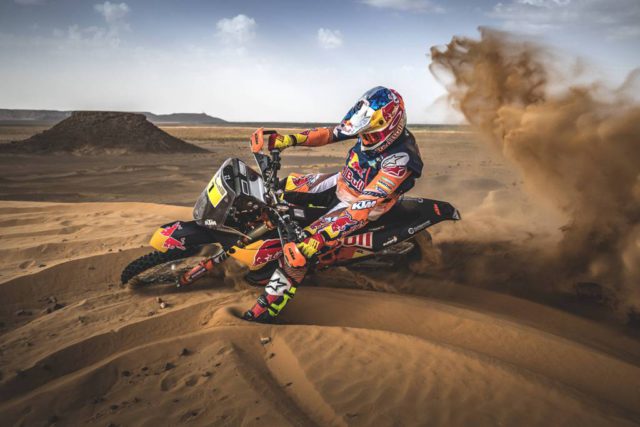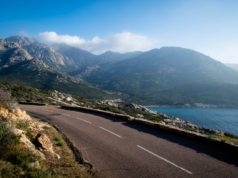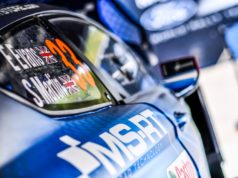How do you prepare for the Dakar Rally, motorsport’s most arduous undertaking – 5,500 miles on two wheels or four? For last year’s bike winner, Sam Sunderland, he has spent the past month acclimatising to the high altitudes riders and drivers look set to face.
The British rider explained: “I’ve been sleeping in an altitude tent for the last month or so. Hopefully, the tent will help me. It [the altitude] makes everything a bit harder fatigue wise but it’s the same for everyone. I’ve prepared well and feel ready.”
Five days of this year’s route will be spent at an altitude of 3,000 metres or more, creating one of the biggest challenges for both competitor and their machinery.
One of Sunderland’s rivals for the prize, Toby Price, who won in 2016 but crashed out with a broken leg last year, joked that he is well equipped to deal with the challenge.
Asked for his defence to altitude sickness, he said: “My thick Australian kangaroo skin. Some people get really sick, ill and headaches but I don’t tend to get these things.
“Somewhere in my DNA altitude is not so bad. And when I broke my femur, I had a blood transfusion and had Bolivian blood put into me so hopefully, that’ll help me a little bit more!”
Altitude is not the only obstacle in the way of the entire field, diet, the lack of sleep and the marathon nature of the course all create their own challenges.
Sam Sunderland has spent the past month acclimatising to the high altitudes riders and drivers look set to face
Laia Sanz has trained for hours in the gym and cycling, hiking, and skiing in the mountains but the South American climate is still a big test.
She said: “The heat is one of the worst things. Some stages become like hell with the heat and you suffer a lot. For that, you try to be as fit as possible.”
But the pre-rally programme can vary from athlete to athlete. For Price, it has been a fitness race against time having undergone a second surgery on that femur three months ago.
“I’ve been cycling, mountain biking and playing on the jet ski, and there’s been as much training on the bike in six weeks as I could to make up for lost time,” he added.
One facet that Price struggles to prepare for is the lack of sleep because of the long nature of the days, and time spent plotting in the road book at the end of each stage for what lies ahead, likewise rival Antoine Meo.
“Physically, I think for me the hardest part is the short time that we sleep every day,” said Meo. “We sleep a really short time every day and, after one week, it’s really tough.”
As well as being sleep deprived, competitors will lose on average 5kg in weight over the varying terrain as they battle to eat and drink in the often stiflingly hot conditions
Price is on, what he calls the “see-food diet”. He added: “I see it and I eat it! I don’t stress too much. Portion sizes are the biggest thing but I eat what I like. In a two-week race, I burn it off no matter what.”
For all the months of preparation, though, Price insists nothing quite prepares you for the rigours of the Dakar, even for the most hardened veteran.
“They’re long, drawn-out days,” he concluded. “It wears you down, it’s physically and mentally draining. It’s never easy, never lets up, it’s always hard.”
If you wonder how it is to live on a biouvac, let’s go for a walk! ?
// Si te preguntas cómo es vivir en un bivouac, ¡vamos de paseo! ?#Dakar2018 #DakarPerú2018 #DakarInside pic.twitter.com/MVIYNdGV9L— DAKAR RALLY (@dakar) January 7, 2018

































